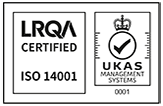Wondering whether to hire a skip but not sure how to go about it? Here’s the Rabbit Skip Hire guide to help you hire a skip quickly and easily.
Whether you’re clearing a garden, undergoing a house clearance or renovations, or even managing a construction project on a larger scale, hiring a skip is a more convenient and straightforward way of getting rid of waste than making numerous trips to a recycling centre.
Use our handy checklist below to help make hiring a skip quick and easy:
1. Assess the type of waste you plan to put in your skip
The first and more important thing to consider before you hire a skip is the type of waste you’re likely to have and whether that waste will be suitable to go into a skip.
The following are all items that can’t go in a skip and must be disposed of carefully:
- Batteries
- Solvents, such as glue and paint
- Electrical equipment and appliances
- Clinical, medical and toxic waste
- Tyres
- Asbestos
- Plasterboard
These items are banned from skips because of how dangerous they can be if they are allowed to go through the same waste processing facilities as combustible materials. For example, batteries can easily combust and start fires if processed with paper and wood. Other prohibited substances, such as asbestos and toxic waste, can cause serious damage to health and the environment if not disposed of correctly.
2. Estimate how much waste are you likely to need to dispose of
You might have lots of waste to get rid of, but if that waste contains items that can’t go in a skip then the size of the skip you need may be a lot smaller than you first thought.
A skip that is too big for your needs is a waste of money, while one that’s too small could cost you more, as you’ll find yourself having to hire another skip to handle it all or having to make additional trips to the recycling centre, which you wanted to avoid in the first place.
For example, if you are having a tidy up of your back garden and a bit of a clearout, the smallest 2 yard mini skip (1.53m3), which takes approximately 40 black bags of waste, is probably sufficient. The biggest 12 yard skip (9.17m3), however, can accommodate up to 240 black bags and is therefore more suitable for building site clearance, industrial premises or demolition sites.
Check out our handy guide to skip sizes to help you work out what size skip would be best for your project
3. Plan where the skip will be parked
The location of your skip is a very important consideration. You need to be totally confident about where it can go to avoid upsetting neighbours, damaging ground, impeding pedestrians and traffic, and at worst endangering others and incurring a fine.
Having chosen your skip’s location, first check that the ground is suitable to take the weight of a filled skip. Then clear away any debris to make sure there’s space for it to be set down securely, with plenty of room for people to move around it.
If the skip is going to be located on a public road, then you’ll need to get a road permit, organise the hire of cones, markings and safety lights, and possibly cover the cost of suspending a parking bay, if applicable. Remember, a skip cannot be placed on a pavement and anyone who incorrectly puts a skip on a public road can face a fine of up to £1,000. If you hire a skip, you are responsible for its location.
4. Go online and book your skip
It’s never been easier to hire a skip. Using our online booking form you can ensure it is delivered to your site at the time that is convenient for you and collected once it is full or you have completed your project.
Skips hire costs start from £119 plus VAT, with prices varying depending on the skip size that you need and your location.
Need more information about how to hire a skip? Get in touch with a member of our friendly team on 01903 762020, email info@rabbitgroup.co.uk or fill out our online skip hire contact form.





